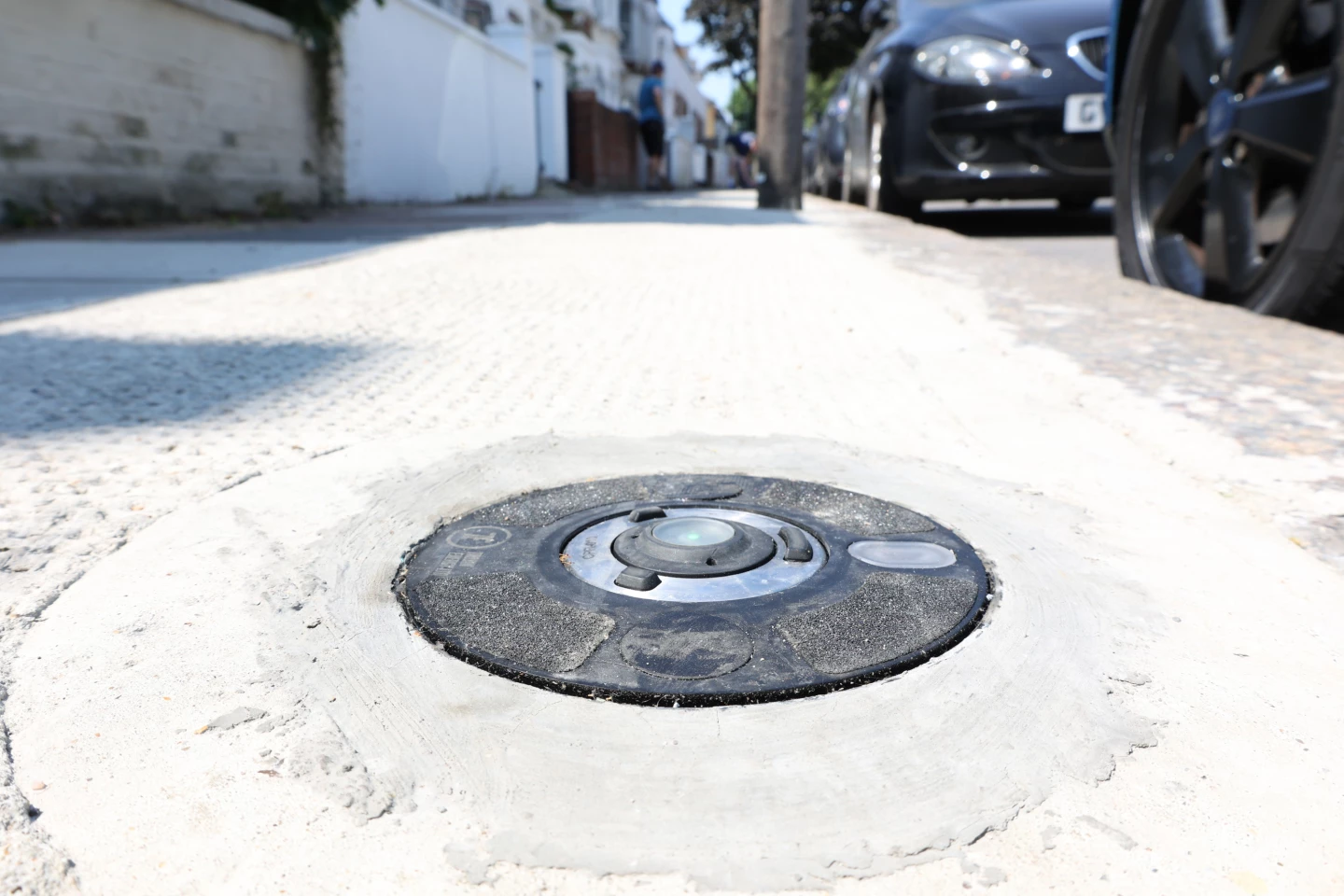Scotland's Trojan Energy has developed an on-street EV charging solution that sits flush with the pavement until a user plugs in a special charging cable and tops up their vehicle. The first five Connectors have been installed in Mortimer Road in the London Borough of Brent, ahead of a full trial of 150 charge points across Brent and Camden later this year.
Part of a three-year Subsurface Technology for Electric Pathways – or STEP – project funded by the Office for Zero Emission Vehicles and delivered with the help of Innovate UK, the flat and flush charging system starts with a series of Trojan Connectors installed near the edge of the pavement, which lie flush with the surface so have little to no visual impact when not in use, and don't obstruct pedestrians.

An array of 15 Connectors are hooked up to a cloud-connected power cabinet that's connected to a 3-phase grid supply, and can be installed up to 100 meters (328 ft) away from the farthest flat and flush Connector.
The service user is supplied with a Trojan Lance, which looks like a kind of air pump and has a charging cable running from it. The Lance is inserted into the Connector, and the plug end is connected to the EV's charge port. The Connector is not "live" until a connection is established with the EV.
The company says that charging rates of 7 kW and 22 kW are supported, with overnight smart charging available "at the lowest possible cost." Each Lance is linked to a specific user account. During the trial, electricity will be charged at 25p (about 35 US cents) per kWh at up to 7.4 kW, or 30p (42 US cents) per kWh for 22.1-kW fast charging.
The full public trial is due to run from September this year to March 2022, and will see six streets in Brent get 15 charge points each, with four more streets in Camden also getting 15 each. Around 140 EV drivers have already signed up to take part, and others in the area are encouraged to do so via the Trojan website (though folks who don't currently drive an EV can also sign up to join the trial).

"This project is a great example of how technology is being used to solve a real-world problem to ensure that our EV infrastructure fits in seamlessly in our local towns and cities," said the UK's Transport Minister, Rachel Maclean. "This is crucial as we build back greener and encourage more people to make the switch, which is why I’m delighted this government is backing its delivery."
The video below has more on the project.
Source: Trojan Energy





